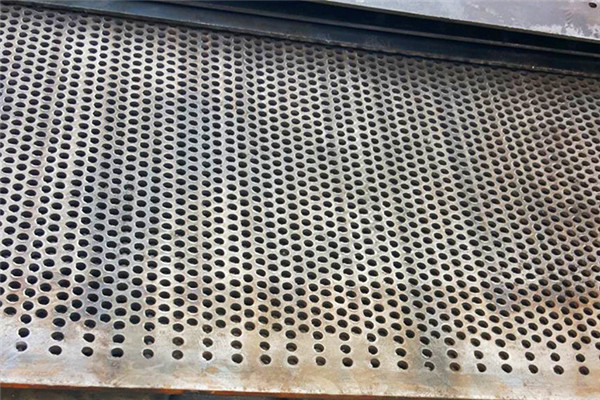Stainless steel perforated sheets are highly valued across multiple industries due to their superior strength, corrosion resistance, and excellent formability. To meet various application needs, these sheets come in a wide range of specifications, including different material grades, thicknesses, hole types, open area percentages, and surface finishes. This article provides an in-depth overview of the key specifications and application features of stainless steel perforated sheets to help you select the right product for your project.
1. Common Stainless Steel Grades
Perforated stainless steel sheets are typically made from the following materials:
304 Stainless Steel: The most widely used grade, offering excellent corrosion resistance and workability. Ideal for general-purpose indoor and outdoor applications.
316 Stainless Steel: Enhanced with molybdenum for superior corrosion resistance, especially in marine, chemical, or high-moisture environments.
430 Stainless Steel: A ferritic stainless steel with moderate corrosion resistance, commonly used for decorative applications or where the environment is less aggressive.
2. Thickness Range
The thickness of stainless steel perforated sheets varies depending on intended use:
Standard thicknesses range from 0.3 mm to 6 mm (approximately 0.012" to 0.24").
Application differences: Thinner sheets are used for filtration, sound absorption, or decorative screens; thicker sheets are chosen for structural reinforcement, security panels, or heavy-duty machinery.
3. Hole Diameter and Patterns
The hole design of a perforated stainless steel sheet directly affects its airflow, filtration capacity, and visual appeal:
Hole diameter: Typically ranges from 1 mm to 100 mm.
Hole shapes:
Round holes (most common, versatile)
Square holes (easy to clean, aesthetic)
Slotted/oblong holes (ideal for drainage and ventilation)
Hexagonal holes (used for industrial filters and architectural panels)
Pitch (center spacing): The center-to-center distance between holes, which impacts open area and sheet strength.
4. Open Area Percentage
The open area is the percentage of the sheet surface that consists of holes. This is a key factor depending on application requirements:
High open area (up to 80%): Suitable for ventilation, acoustic panels, or filtration systems.
Low open area (as low as 10%): Used for structural strength, protection screens, or load-bearing purposes.
5. Standard and Custom Sizes
Standard dimensions of stainless steel perforated sheets are as follows, with customization available on request:
Standard sizes:
1220 mm × 2440 mm (4 ft × 8 ft)
1520 mm × 3050 mm (5 ft × 10 ft)
Custom options: Cutting, bending, and rolling services are available to suit specific engineering or architectural requirements.
6. Edge Finishing Types
Edge treatment improves both the functionality and safety of perforated stainless steel sheets:
Straight edges: The standard finish, suitable for general use.
Beveled edges: Ideal for enhanced aesthetics and safer handling.
Rolled or curved edges: Used in applications requiring smooth contact surfaces, such as machine covers or protective panels.
7. Surface Finishes and Visual Effects
Surface finishes enhance both appearance and corrosion resistance. Common finishes include:
2B Finish: Smooth and matte, widely used across industrial and architectural fields.
Mirror Finish: Highly reflective, popular in decorative and interior applications.
No. 4 Brushed Finish: Uniform grain lines offering a modern look and good wear resistance.
Mill Finish: Raw and untreated surface straight from the manufacturing line, suitable for concealed or industrial applications.
8. Strength and Durability
Thanks to the inherent properties of stainless steel, perforated sheets exhibit excellent mechanical performance:
Tensile strength: Generally above 500 MPa, depending on grade and thickness.
Corrosion resistance: Resists rust and environmental damage, even in high-moisture or chemically aggressive conditions.
Heat resistance: Maintains structural integrity at elevated temperatures, suitable for exhaust systems and thermal shields.
9. Versatile Applications
Stainless steel perforated sheets are widely adopted in both functional and aesthetic applications, such as:
Architectural decoration: Facades, stair railings, partitions, ceilings, and building cladding.
Filtration systems: For water treatment, air purification, and material screening.
Acoustic engineering: Soundproof panels, noise barriers, and enclosure lining.
Mechanical protection: Equipment guards, electrical cabinet screens, ventilation grilles.
Transportation industry: Automotive grilles, exhaust parts, and air vents in trains and aircraft.
Security applications: Fencing, safety gates, and anti-theft window screens.
Conclusion
Stainless steel perforated sheets offer a perfect balance between functionality and aesthetics, making them a preferred choice across various sectors. By selecting the right combination of material grade, thickness, hole design, and surface treatment, users can achieve targeted performance for ventilation, filtration, structural support, or design purposes. For custom solutions or technical guidance, feel free to contact our professional team for a detailed consultation and quotation.
